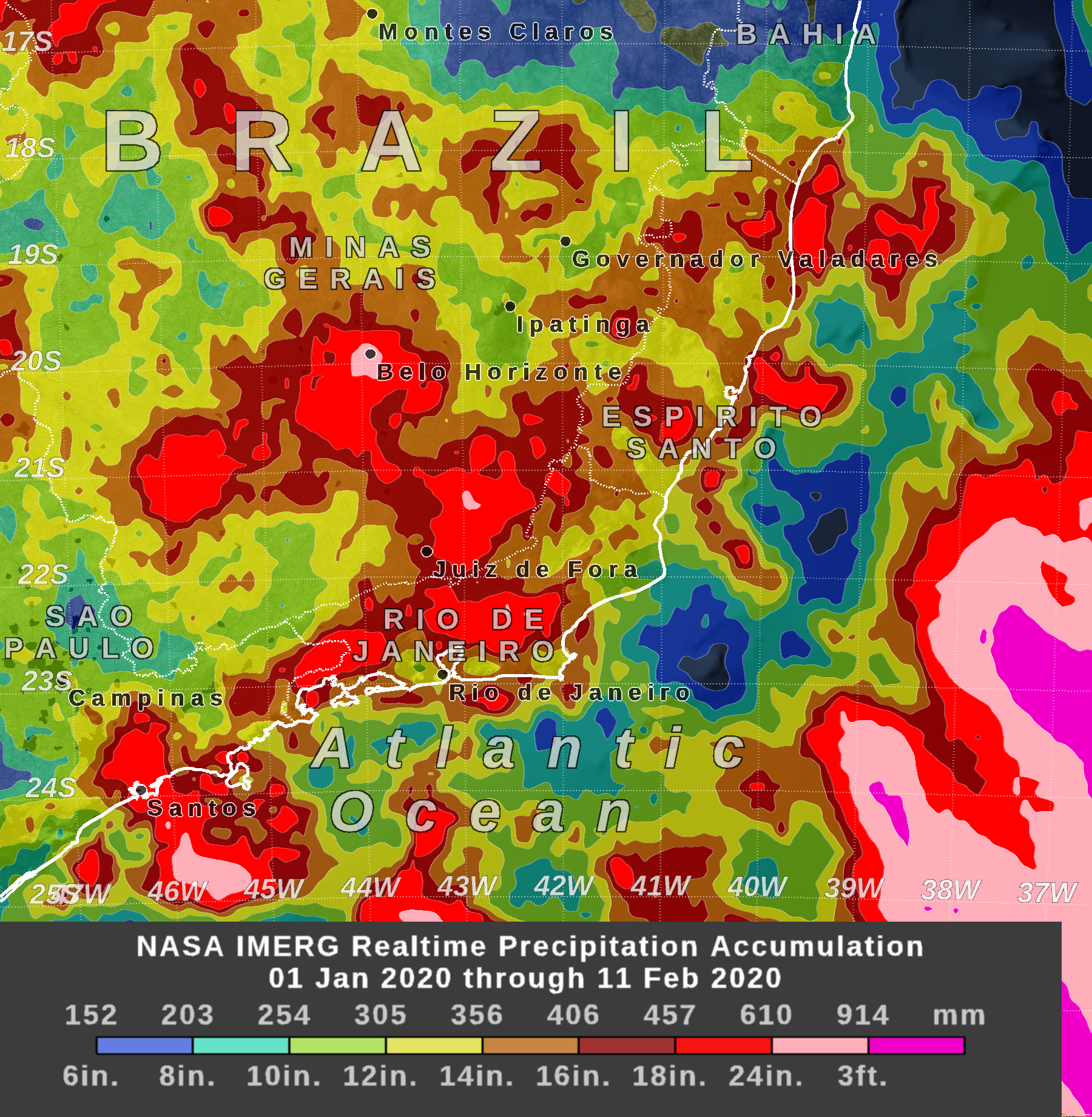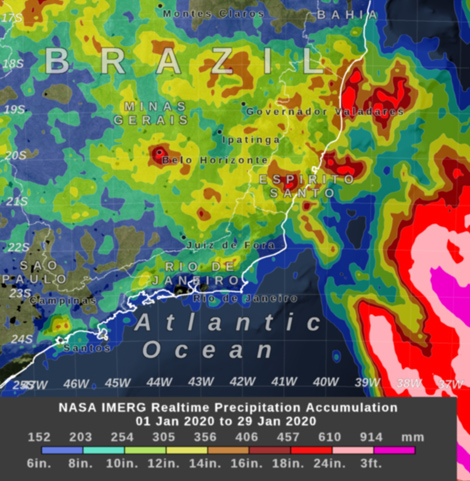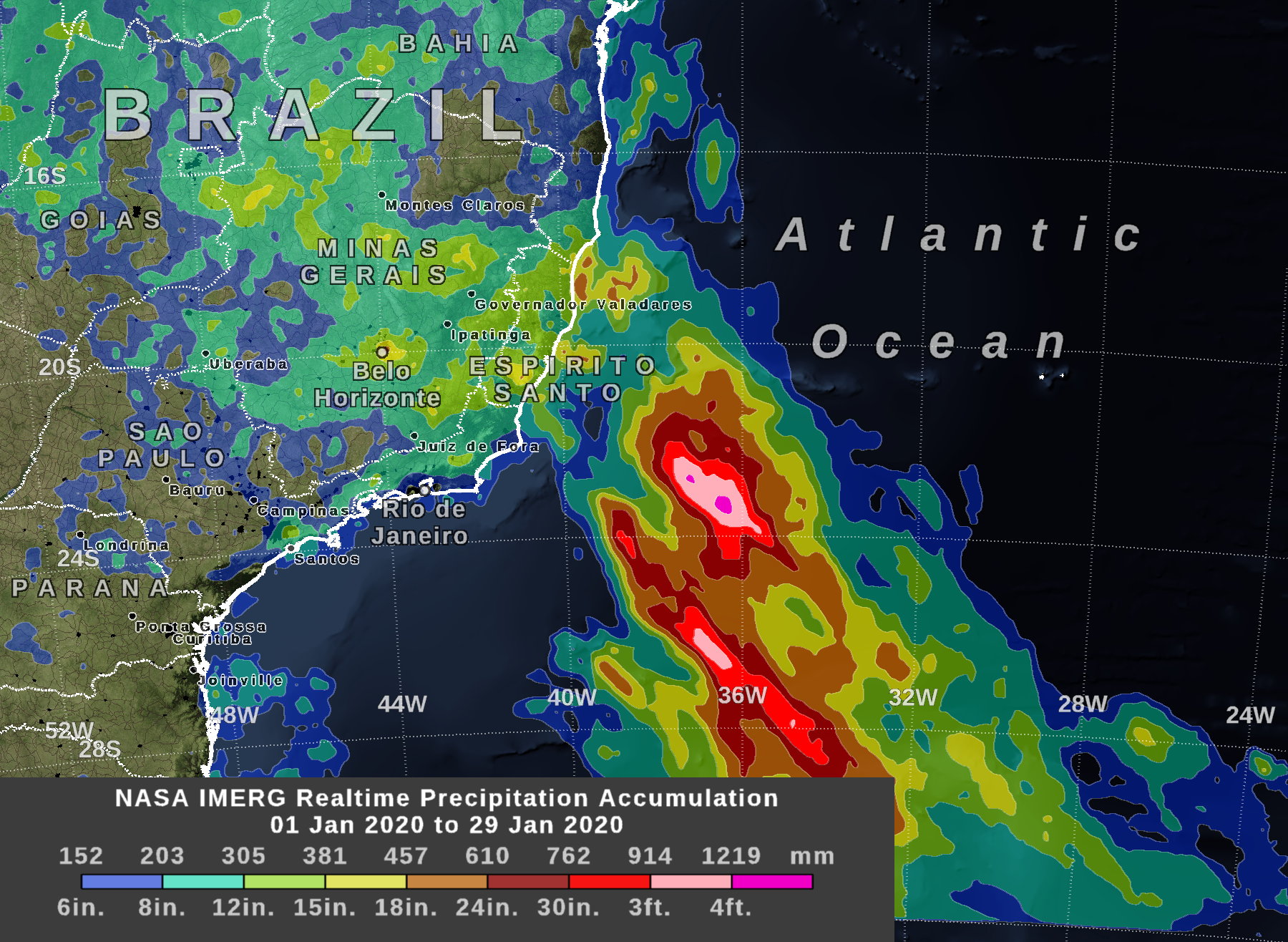Heavy Rain Leads to Flooding in Brazil
UPDATE 2/12/2020:
An extended IMERG analysis of rainfall in Brazil shows even more extreme rainfall occurring in the first weeks of February, with large regions experiencing rainfall totals over 18 inches since the start of 2020. According to local authorities, the region has already received 98% of the rainfall that is typically expected to fall during all of February.
UPDATE 1/30/2020:
During January 2020, parts of the Brazilian states of Minas Gerais and Espirito Santo experienced above average rainfall, causing deadly floods in the region. Part of the month's heavy rainfall came from a storm system that produced downpours as it traveled southeastward across these two Brazilian states. The NASA IMERG precipitation-estimation algorithm saw these events unfold in near realtime. Last fall, NASA reprocessed the IMERG estimates all of the way back to the year 2000, allowing for improved, long-term comparisons to be made for events such as this month's rainfall over Brazil.
According to IMERG's long-term record, the large rain accumulations this month are approximately double those of an average January in parts of Minas Gerais and Espirito Santo, Brazil. In contrast, states to the south (Sao Paulo and Parana) continue to experience drought conditions in January.
The system dumped much more rain a few hundred miles off coast, as the system persisted over the Atlantic Ocean. The image below takes a wider view of the storm and shows that, over the ocean, the rainfall accumulation exceeded 3 feet in some places during the first 29 days of January.
IMERG uses satellite observations to estimate the agriculturally important summer rains in the Southern Hemisphere, but at the same time, IMERG has been estimating snowfall in the Northern Hemisphere. Estimating snowfall from satellite observations is challenging, and to address some of the scientific challenges, a NASA field campaign called IMPACTS on-going this month in the United States (https://espo.nasa.gov/impacts).
Precipitation visualization by Owen Kelley (NASA/GMU).




